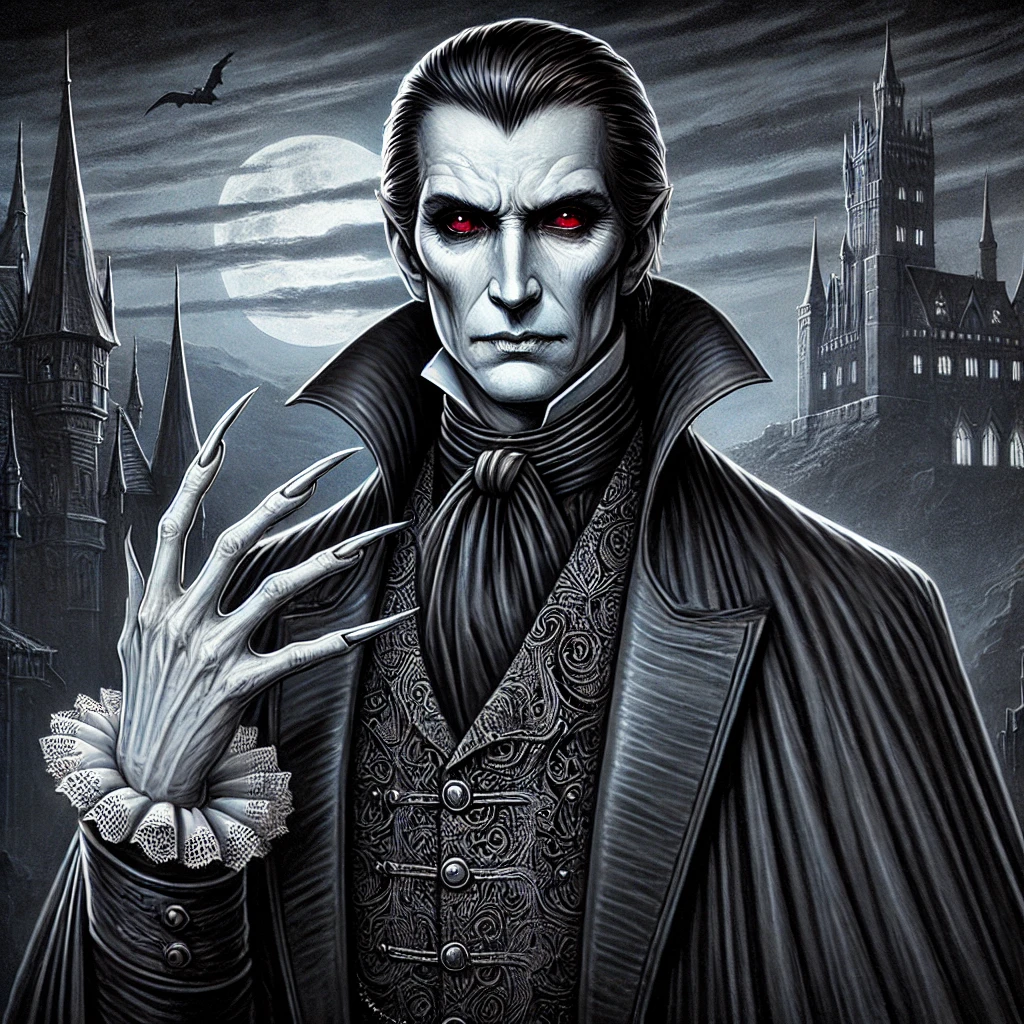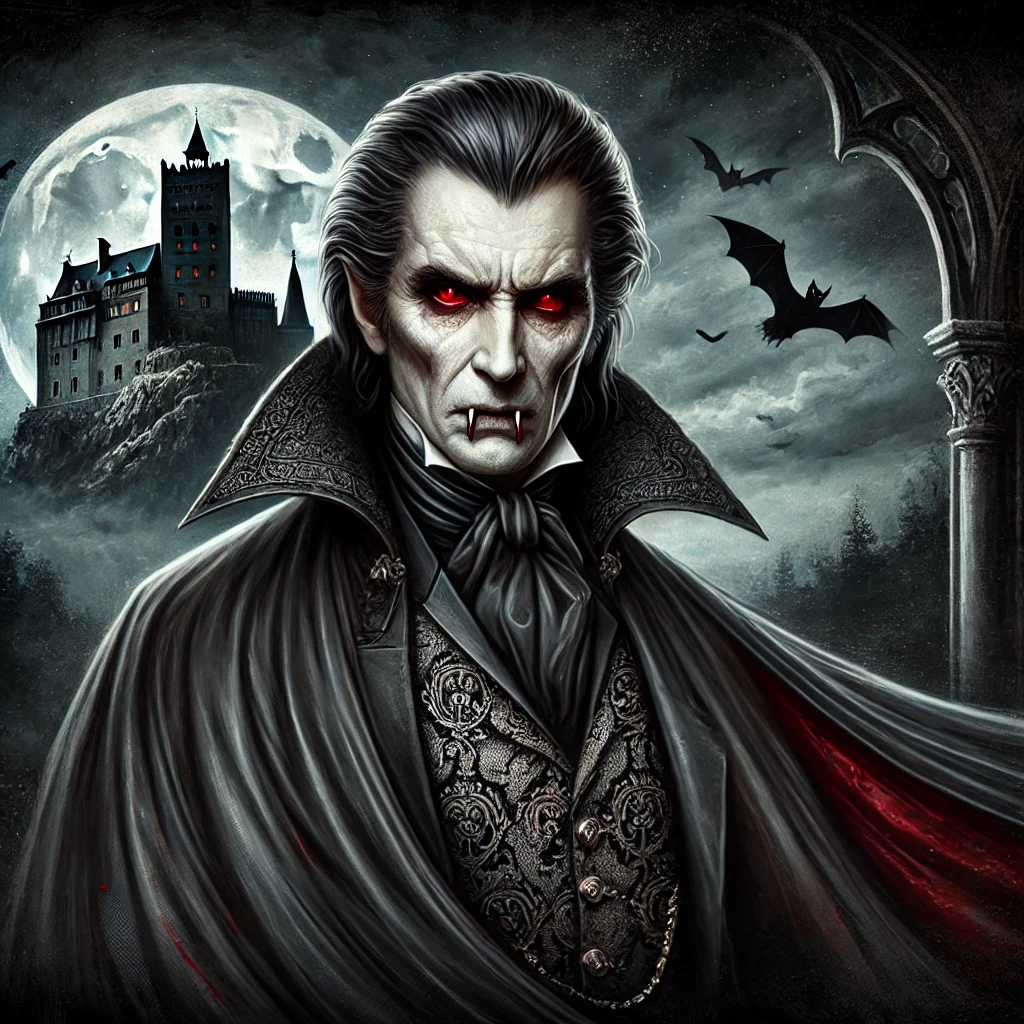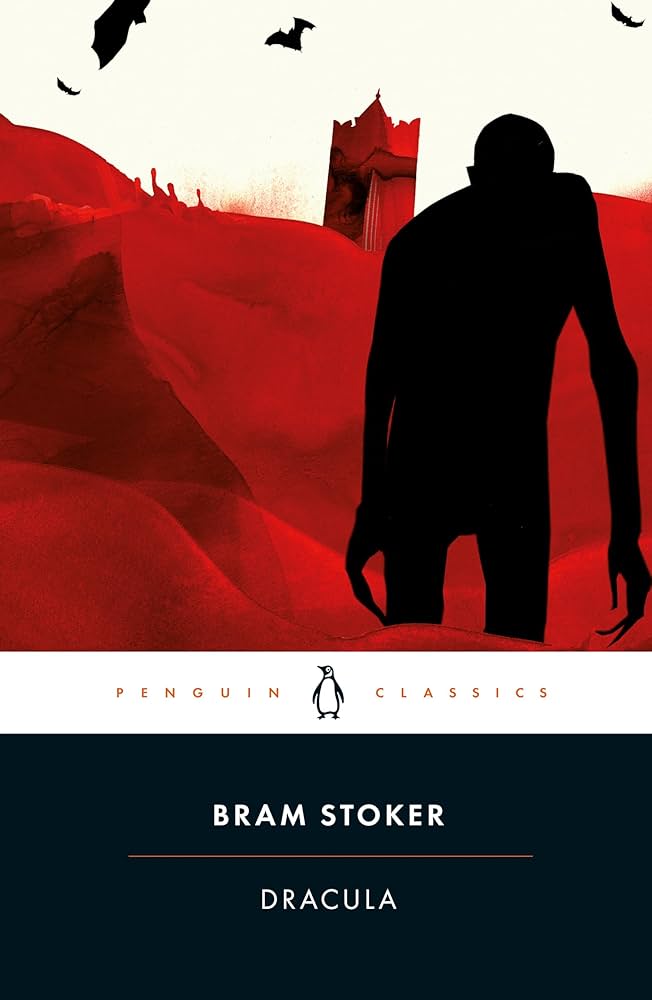A detailed summary of Dracula by Bram Stoker
“Dracula” by Bram Stoker is a Gothic horror novel first published in 1897, widely recognized as a cornerstone of vampire literature. The novel is primarily structured through a series of journal entries, letters, and newspaper articles, a narrative technique known as epistolary form. The plot unfolds in the late 19th century and follows the chilling story of Count Dracula’s attempt to move from Transylvania to England to spread the undead curse of vampirism and the group of people who seek to stop him. Let us now dive into the fangs of fear of dracula.
Plot Summary:
The novel begins with Jonathan Harker, a young English solicitor, traveling to the remote Transylvanian castle of Count Dracula to assist in a real estate transaction. Upon arriving, Harker soon realizes he is a prisoner, and Dracula is no ordinary man but a vampire with supernatural powers, including the ability to control wolves and transform into a bat or mist. Dracula feeds on human blood to maintain his immortality. Harker escapes the castle after discovering Dracula’s true nature, he is shaken by the fangs of fear and the ordeal leaves him traumatized.
Dracula travels to England by ship, bringing with him boxes filled with Transylvanian soil, which he needs to rest in during the day. In England, Dracula begins to prey on Lucy Westenra, a beautiful young woman engaged to Harker’s friend Arthur Holmwood. Lucy falls gravely ill, and despite the efforts of Dr. Seward and Professor Abraham Van Helsing—an expert in obscure diseases and folklore—her condition worsens. Lucy dies, but soon after, reports emerge of a strange woman feeding on children. Van Helsing and his companions deduce that Lucy has become a vampire and reluctantly destroy her undead body to save her soul.
Meanwhile, Harker has returned to England and marries Mina Murray, Lucy’s close friend. Dracula begins targeting Mina, drinking her blood and attempting to turn her into a vampire as well. This threat galvanizes the group—Harker, Van Helsing, Dr. Seward, Arthur Holmwood, and the American Quincey Morris—into a concerted effort to destroy Dracula. Using their combined knowledge of vampire lore, they track him down, first in England and then back to his castle in Transylvania.
In a climactic showdown, the group confronts Dracula’s servants, known as the Szgany, and ultimately manages to kill Dracula by stabbing him through the heart and cutting off his head and they thereby overcoming their own fangs of fear. As Dracula’s body crumbles to dust, Mina is freed from his curse. Quincey Morris, however, is mortally wounded in the battle and dies, but not before witnessing Dracula’s end.
Themes and Symbolism:
“Dracula” explores several themes:
- Fear of the Unknown and the Foreign: Dracula, a foreigner from Eastern Europe, represents a threat to the civilized world of Victorian England. His ability to invade and corrupt the English reflects anxieties about immigration, disease, and contamination.
- Sexuality and Victorian Morality: Dracula’s attacks, especially on women, have strong sexual undertones, symbolizing forbidden desires and the fear of female sexuality, which was a taboo subject during Stoker’s time.
- Science vs. Superstition: Van Helsing represents the clash between modern science and ancient folklore. Though he is a doctor, he relies on old-world remedies like garlic, crucifixes, and holy water to combat Dracula, suggesting that some forces are beyond the realm of science.
- Religion: Christian symbols and rituals are central to the characters’ fight against Dracula. The use of crucifixes, holy wafers, and sacred rites emphasizes the novel’s moral framework, where faith is portrayed as a powerful weapon against evil.
Legacy:
“Dracula” was not immediately recognized as a literary masterpiece, but over time, it gained immense popularity, cementing itself as a classic of Gothic literature. Its portrayal of vampires as seductive yet horrifying creatures laid the foundation for the countless vampire stories that followed. The character of Count Dracula has since become one of the most iconic figures in popular culture, representing the archetype of the vampire.

In “Dracula” by Bram Stoker, the characters serve as essential elements to explore the novel’s major themes such as good versus evil, sexuality, and superstition versus modernity. Here is an analysis of the key characters in the novel:
1. Count Dracula
Role: Antagonist Dracula is the central figure of evil in the novel, embodying the fears and anxieties of Victorian society. He is a centuries-old vampire from Transylvania who seeks to extend his influence by relocating to England, where he can feed on more souls. Dracula is portrayed as a figure of both aristocratic sophistication and primal horror. He has supernatural abilities—such as shape-shifting into a bat or wolf, controlling animals, and even influencing the weather—but is vulnerable to religious symbols like crucifixes and holy water. His reliance on blood to survive symbolizes his parasitic nature, his fangs are nothing but fangs of fear and he represents a form of corrupt, undead immortality.
Character Traits:
- Manipulative and Cunning: He lures Jonathan Harker to his castle under false pretenses and later invades England to prey on innocent people.
- Predatory: Dracula is often depicted as preying particularly on women, with his attacks carrying sexual connotations. His power over his victims is both literal and metaphorical, as he corrupts their bodies and minds.
- Symbol of Foreign Threat: Dracula represents the fear of the unknown and the foreign invading England, embodying Victorian anxieties about Eastern Europe, disease, and the erosion of moral values.
2. Jonathan Harker
Role: Protagonist and narrator of parts of the novel Jonathan Harker begins the novel as a young, naive solicitor traveling to Dracula’s castle to complete a business transaction. He quickly becomes a victim of Dracula’s manipulations, held captive in the vampire’s eerie castle. Although initially passive, Harker evolves throughout the novel, becoming one of the leaders in the fight against Dracula.
Character Traits:
- Courageous and Resourceful: Despite his initial terror and helplessness, Harker shows great bravery by escaping Dracula’s castle and later taking part in the hunt to destroy the vampire.
- Rational but Open to the Supernatural: As a modern Victorian man, Harker begins as a rationalist, but his terrifying experiences open his mind to the supernatural.
- Loyal and Protective: Harker’s relationship with Mina demonstrates his loyalty and deep affection, and he is determined to save her from Dracula’s influence.
3. Mina Harker (née Murray)
Role: Heroine, Jonathan’s wife Mina is one of the novel’s most complex characters, embodying both Victorian ideals of purity and womanhood while also showing intelligence and strength. She is an essential member of the group that fights Dracula, using her cleverness and organizational skills to help the men. However, she also becomes one of Dracula’s victims, and her transformation into a potential vampire is one of the central conflicts.
Character Traits:
- Intelligent and Resourceful: Mina is highly organized, recording and transcribing journal entries and letters that help the group track Dracula’s movements.
- Emotionally Strong: Despite her victimization by Dracula, Mina remains composed and resilient, helping the men in their efforts to defeat him.
- Victorian Ideal of Womanhood: Mina is portrayed as virtuous, faithful, and loving—qualities the novel upholds as the ideal. Her purity is what ultimately saves her, as the group works tirelessly to prevent her full transformation into a vampire.
4. Lucy Westenra
Role: Mina’s best friend, Dracula’s victim Lucy is a beautiful and charming young woman who is initially full of life and admired by several suitors. However, she becomes one of Dracula’s early victims, and her descent from vibrant young woman to a vampire reflects the novel’s anxieties about female sexuality and corruption.
Character Traits:
- Innocent and Naive: Lucy is portrayed as the embodiment of youthful innocence and purity before falling under Dracula’s influence.
- Sexualized in Death: After becoming a vampire, Lucy’s innocence is replaced by a dangerous, overtly sexual persona. The “unholy” transformation in her character raises questions about the relationship between sexuality and evil.
- Tragic Figure: Lucy’s death and subsequent resurrection as a vampire is one of the most emotional moments in the novel, as her friends must kill her in order to free her from Dracula’s influence.
5. Professor Abraham Van Helsing
Role: Mentor and leader of the group against Dracula Van Helsing is a Dutch doctor with a wide array of knowledge in both medicine and the supernatural. He is the first to recognize that Lucy’s illness is caused by a vampire and takes the lead in organizing the group to combat Dracula. Van Helsing represents the novel’s blend of science and superstition, using both modern medicine and ancient folk remedies to fight the vampire.
Character Traits:
- Wise and Experienced: Van Helsing is highly knowledgeable, combining scientific expertise with a deep understanding of vampire folklore.
- Relentless and Brave: His commitment to fighting Dracula is unshakable, even when others falter or doubt the supernatural nature of the threat.
- Religious and Moralistic: Van Helsing sees the battle against Dracula as a moral and spiritual fight. His use of religious symbols emphasizes the importance of faith in overcoming evil.
6. Dr. John Seward
Role: Doctor and suitor of Lucy Seward is a logical and pragmatic character, running an insane asylum and taking an empirical approach to the world. He is one of Lucy’s suitors and remains deeply affected by her death. He assists Van Helsing and the others in their fight against Dracula, even though he initially struggles to accept the supernatural.
Character Traits:
- Scientific and Rational: Seward initially relies on his medical knowledge, but he eventually embraces the supernatural aspects of the battle against Dracula.
- Emotionally Invested: His unrequited love for Lucy adds a personal dimension to his involvement in the fight, and her death deeply wounds him.
- Supportive and Loyal: Despite his initial skepticism, Seward becomes a key ally in the battle, trusting Van Helsing’s leadership and working tirelessly to defeat Dracula.
7. Quincey Morris
Role: American adventurer and Lucy’s suitor Quincey is a bold and adventurous character from Texas who, like Seward and Holmwood, is in love with Lucy. Although he is less developed as a character compared to the others, Quincey is portrayed as brave, honorable, and willing to risk his life for his friends.
Character Traits:
- Brave and Self-Sacrificing: Quincey ultimately sacrifices his life in the final battle to destroy Dracula, which secures the group’s victory.
- Charming and Loyal: He brings a sense of American individualism and heroism to the group, often serving as a figure of physical strength and courage.
8. Arthur Holmwood (Lord Godalming)
Role: Lucy’s fiancé and suitor Arthur, later titled Lord Godalming, is another of Lucy’s suitors and ultimately her fiancé. His grief over Lucy’s transformation and death fuels his dedication to the fight against Dracula.
Character Traits:
- Devoted and Loving: Arthur’s deep love for Lucy motivates him to join the hunt for Dracula after her death.
- Aristocratic and Honorable: As a nobleman, Arthur provides financial and social support to the group’s efforts, and his high moral standards make him an ideal Victorian gentleman.
Conclusion:
The characters in “Dracula” represent different facets of Victorian society, from traditional virtues like purity and faith to anxieties about science, sexuality, and foreign influences. Each character plays a crucial role in the novel’s exploration of good versus evil, and their collective struggle against Count Dracula forms the backbone of this timeless Gothic horror.

You can get here a list of others novels to read. click here
Watch the Dracula movie here

